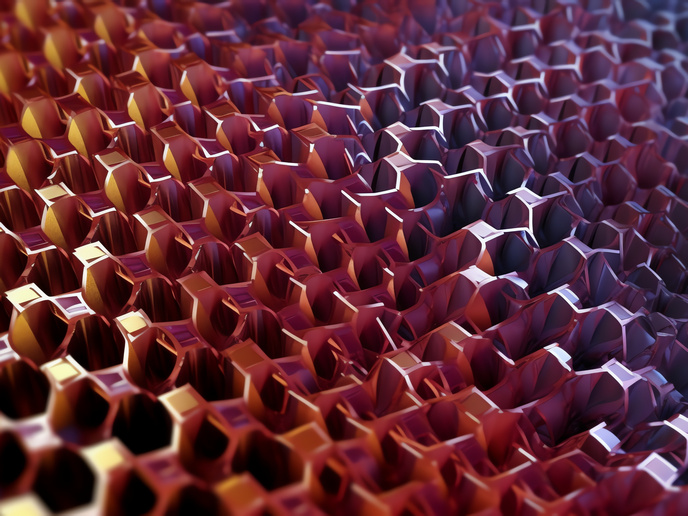Pioneering design platform reveals novel topological structures
Over the last few decades, topological materials have taken the physics and engineering community by storm as scientists continue to discover more of these exotic materials whose properties remain unchanged under continuous twisting, bending or other deformations. Once thought unusual, topological materials are ubiquitous and include electronic, optical and mechanical ones. Topological mechanical metamaterials and, more generally, topological aspects of condensed matter systems are a vibrant, emerging area of research. Accelerating their discovery and application requires innovative design approaches. The EU-funded TopMechMat project set out to exploit the power of genetic algorithms in executing the required large-scale parameter scans in novel design algorithms.
Topological quantum chemistry and genetic algorithms
According to project coordinator Sebastian Huber of project host ETH Zürich: “The key characteristic of topological materials – the stability of functionalities encoded in topology – stems from the fact that topology manifests itself in discrete-valued topological indices.” These indices are mathematical functions that map chemical or molecular structures to numerical values – the digital counterparts of chemical structures. These discrete-valued topological indices must be optimised to discover new topological materials, meaning traditional continuous optimisation schemes based on gradients like steepest descent cannot be used. TopMechMat turned to the emerging theory of topological quantum chemistry and AI-related genetic algorithms to overcome these challenges. Topological quantum chemistry, describing all possible band structures (possible electron energy levels and band gaps) in all materials, provided deep theoretical insight into the fundamental mechanisms at work in topological materials. Next, AI-related genetic algorithms – a gradient-free optimisation approach based on genetics, natural selection and evolution – harnessed these insights in the search for topological mechanical metamaterials. Widely used in AI and machine learning, they are extremely efficient at discovering optimised solutions when searching through large and complex data sets.
New design approach, new topological mechanical metamaterials
“We have transformed the way we design our topological mechanical metamaterials with the combination of topological quantum chemistry and AI-related evolutionary design strategies such as the covariance matrix-adaptation evolution strategy. With these, our applied research (the search for topological mechanical metamaterials) has furthered our understanding of fundamentals (topological mechanisms). Success is evident – our approach has revealed topological structures never observed in any other platform, including the electronic ones investigating such phases of matter since the early 1980s,” Huber notes. Similarly, the project demonstrated the extended value of interdisciplinary research, where discoveries and experimentation in one field can lead to unexpected breakthroughs and insights in seemingly unrelated areas. While studying sound waves in acoustic cavities, the researchers realised that the insights obtained from the engineering of acoustics have implications for understanding superconductivity in a quantum material, twisted bilayer graphene. “This surprising connection between two seemingly unrelated topics, may be one of the most important lessons of this project,” Huber notes. Huber believes AI will play an even more significant role in the search for topological electronic materials. “Simply put, the design of mechanical or optical materials can be reduced to drilling the correct arrangement of holes in the correct materials. Electronic compounds require sifting through voluminous entries in crystallographic databases in an effort to link them to desired properties, a challenge well-suited to AI data science methods,” he concludes. Harnessing the power of genetic algorithms and other AI-based methods should accelerate revelations beyond the current tip of the iceberg when it comes to topological mechanical, electronic and optical metamaterials. Exotic new applications are sure to follow.
Keywords
TopMechMat, topological, AI, genetic algorithms, topological mechanical metamaterials, topological quantum chemistry, topology, covariance matrix-adaptation evolution strategy, topological indices, superconductivity, graphene

